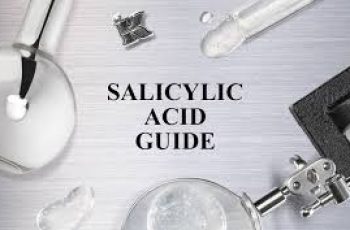Do you have dry skin and still have annoying rashes? Does your skin feel oily but also flaky in certain areas? It sounds to us like you have combination skin – but don’t worry! Our skincare experts will show you the ultimate skincare routine for combination skin! We show you the best products for combination skin and show you how to use them and how to care for this often unpredictable skin type. What is combination skin? As the name suggests, combination skin is a combination of different skin types. You may have oily areas (usually the T-zone, nose and chin), while your cheeks and hairline may have normal to dry skin. Signs of combination skin: Oily T-zone, nose and chin. Normal to dry skin elsewhere, especially on the cheeks and hairline. Mild acne on the forehead, nose and chin. Large pores on the chin, nose, forehead and patchy makeup. What causes combination skin? Oily spots are caused by overactive sebaceous glands in the T-zone. Most of the time it is hereditary.
However, sometimes the products you use can make problem areas worse. Therefore, it’s important to use products for combination skin to improve your complexion and keep it healthy.
The Best Skincare Routine for Combination Skin. Trust us: you can only control dry and oily areas by using the best products for combination skin.
Products targeted at oily skin may make dry patches worse, and conversely, intensely hydrating products targeted at dry patches may cause oily patches to become even oilier!
Following this step-by-step skincare routine for combination skin ensures that all problem areas receive the best care, attention, and ingredients for soft, healthy-looking skin.
Step 1 – Cleansing: Start your routine with REVOLUTION SKINCARE’s Retinol Cleanser for Combination Skin. This retinol-based formula is known for its ability to unclog pores.
It decongests the skin, thoroughly cleansing it and instantly refreshing it. It has anti-aging properties to ensure youthful-looking skin.
Not only does it help remove dirt and impurities from the skin, but its creamy consistency nourishes and soothes redness and sensitivity.
Step 2 – Tone: Combination skin often needs something different every day. Some days may be oilier/drier than others. Therefore, it’s important to choose the best toner for your combination skin.
Cleanse and nourish skin with REVOLUTION SKINCARE 5% Glycolic Acid Toner. Formulated with Ginseng, Witch Hazel and Aloe Vera, this toner soothes, brightens and tightens pores.
Step 3 – Serum: Combination skin often looks dull, especially in dry areas. Use TARGETED ACNE SERUM 2% SALICYLIC ACID as a serum to smooth, purify and nourish skin. Subtle gold accents also add to the allure.
This serum for combination skin is meant to be used morning and night after cleansing and toning, followed by moisturizing.
Step 4 – Eye Cream: If you have dry patches around your eyes, try REVOLUTION SKINCARE Retinol Eye Cream. Enriched with green tea extract, this formula contains powerful antioxidants to nourish the skin. Enriched with retinol
This eye cream helps reduce the appearance of fine lines and wrinkles as well as uneven skin tone and texture, while reducing the formation of congestion and blemishes.
Step 5 – Moisturize While some areas may be oilier than others, it’s important to ensure your skin gets the hydration it needs to keep it looking and feeling soft and healthy. That’s why you need a moisturizer
Combination skin.
Try REVOLUTION SKINCARE MATTIFY BOOST Moisturizer, which contains niacinamide to erase blemishes and rosemary extract to soothe stressed skin. The matte finish is perfect for oily days without skimping on moisture! Extra Steps
– Mask Sometimes your skin can benefit from a few extra steps in your routine. Not only are masks ideal for a pampering night, but they’re also great for ingredients that target problem areas.
REVOLUTION SKINCARE’s Charcoal Purifying Mask is formulated with charcoal to target three main concerns for combination skin: excess oil, blemishes, and dryness. Skin feels detoxified, soothed and hydrated, excess oil in the skin’s T-zone is absorbed and dry areas are moisturized.
DQH Knowledge drop: In your 20s, your skin cell turnover decreases. (Cell turnover is a key component in keeping your skin youthful.) You know what else slows down? Your collagen production. Starting in your 20s, collagen decreases by about 1 percent per year. Should you want to prevent fine lines and wrinkles, start by eliminating behaviors that contribute to premature aging. “If it’s bad for you, it’s bad for your skin,” says dermatologist Michel Somenek.
“Cigarette smoking reduces blood flow to the skin and causes premature wrinkling and a dull skin texture. Making the repeated pursed motion to inhale can also cause smoker’s lines. Alcohol and recreational drugs are toxins for the skin that damage its cellular structure and DNA,” Somenek tells us. “The faster you eliminate vices while you are young, the better chance your skin and body have to recuperate.” Also, adopting an anti-aging routine in your 20s is key. After all, the best offense is a good defense. We spoke to Somenek and experts Joshua Ross and Audrey Kunin to find out more.
Keep reading for the best anti-aging products for your 20s, according to skincare professionals.
Sunscreen
“We all know that the sun is the number one cause of skin aging and starting the prevention in your 20s is very important,” Ross says. “The majority of your sun damage won’t start to appear until you’re in your 30s, so don’t wait until you see it surface or you’ll be behind the curve. Stay ahead of it with a good-quality zinc-based sunscreen worn daily.”
Farmacy Green Defense Daily Mineral Sunscreen
An invisible sunscreen with SPF 30, plus botanical extracts meant to protect skin with tons of antioxidants. Bonus: It’s clean and fine to use under makeup.
Bareminerals Complexion Rescue™ Tinted Moisturizer Broad Spectrum SPF 30
Although we recommend you use your SPF and moisturizer separately, we also understand moments when you don’t have time or energy for that extra step. For those times, this bareMinerals moisturizer is a great thing to have on hand.
Vitamin C Serum
“A great introduction to anti-aging is to start with a vitamin C serum in your morning skincare routine,” Ross says. “It’s a powerful antioxidant that will neutralize free radicals and brighten the skin.” He adds that it’s a great way to counteract the effects of the sun’s harmful rays, which, as previously mentioned, are among the biggest causes of premature aging.
Drunk Elephant C-Firma™ Vitamin C Day Serum
The Drunk Elephant C-Firma is a lightweight serum that promises to give skin a glow by combining the brightening powers of vitamin C with ferulic acid, l-ascorbic acid, and vitamin E. The included sodium hyaluronate is meant to replace hydration loss, so you shouldn’t have to deal with any irritation.
Sunday Riley C.E.O. Rapid Flash Brightening Serum
This potent serum is jam-packed with vitamin C (15 percent, to be exact), which means it’s a potential superstar at both brightening skin and dousing it in antioxidants.
Peptides
Using peptides on your skin has many benefits, says Somenek. “The skin barrier is what defends the body against pollution, UV rays, bacteria, and toxins. It can be damaged by several everyday factors. Using topical peptides aids in building a stronger barrier,” he says. “Peptides comprise elastic fibers, which are a type of protein. These fibers help to make skin appear taut and firm. Peptides can also help repair damaged skin, relieve inflammation, and even out skin tone. Some peptides can kill acne-causing bacteria that is common in 20-somethings.”
Kunin agrees, saying, “Peptides are an excellent entry point for supporting collagen.” She recommends looking for face and eye treatments that contain these collagen-boosting powerhouses.
Charlotte Tilbury Magic Eye Rescue Cream
This Charlotte Tilbury super-emollient eye cream has a base of coconut oil and shea butter (read: it’s incredibly hydrating). Botanicals plus peptides are meant to help reduce dark circles and boost collagen, respectively.
This creamy moisturizer serves up potent collagen-boosting peptides and pycnogenol, and antioxidant-rich vitamin C. “Instead of sitting on top of the skin, peptides penetrate the outer layer so they go deep. The ‘signals’ they send tell the cells to produce elastin and collagen, which are needed for youthful-looking skin,” explains Somenek.
At-Home Peel Pads
Remember that skin cell turnover fiasco we talked about earlier? One way to help support it is by exfoliating. “Exfoliation is important to help keep skin fresh and luminous,” Kunin says. She recommends using at-home peel pads as an easy and effective way to exfoliate.
“The goal in your 20s is to fight the slowing pace of cell turnover. It is wise to use products that gently exfoliate, yet still remove oil and other impurities. Products that have Alpha Hydroxy Acids (AHA) or Beta Hydroxy Acids (BHA) are a good choice.”
According to Somenek, you should only exfoliate two to three times a week. “People of all ages are guilty of over-exfoliating and that can be too much of a good thing,” he says.
Dermadoctor Kakadu C Intensive Vitamin C Peel Pad
A few swipes of this Derma Doctor powerful peel pad promise to leave your skin glowing and smooth, thanks to the seven (yes, seven) types of chemical exfoliants, including AHA and BHA. It also contains vitamin C via Kakadu plum extract for added brightening and antioxidant protection.
KEY INGREDIENTS Kakadu plum extract is sourced from the Kakadu plum, a fruit grown in northern Australia. It contains vitamin C, which restores the skin’s natural barrier, increases collagen production, and soothes irritation.
Dr. Dennis Gross Skincare Alpha Beta® Universal Daily Peel Pads
These are the gold standard of peel pads, with a cult following and over 900 five-star reviews on Sephora. They’re easy to use and contain a blend of anti-aging exfoliating acids.
Emollient Night Cream
“In your 20s, you need to start upping the hydration in your skincare routine. You may have been cautious of over-moisturizing because of acne in your teens, but as you enter your 20s, your skin transitions and becomes drier,” Ross says. “I recommend an emollient night cream added into your evening skincare regimen.”
“Twenty-somethings need to make sure that they are not using creams that will clog their pores and cause excess oil production,” says Somenek. Opt for non-comedogenic products.
Cerave Skin Renewing Night Cream
One great choice is the CeraVe Skin Renewing Night Cream, which is a non-comedogenic night cream that leaves skin soft and glowy. It combines the moisturizing powers of ceramides and hyaluronic acid.
RoC Retinol Correxion Max Hydration Creme
“The best night cream ingredients contain retinol, benzoyl peroxide, and/or salicylic acid or hyaluronic acid. The goal is to moisturize, yet remove excess oil,” says Somenek. This Roc Retinol Correxion cream fits the bill as it contains both hyaluronic acid and retinol so it promises to moisturize while also being non-comedogenic.



